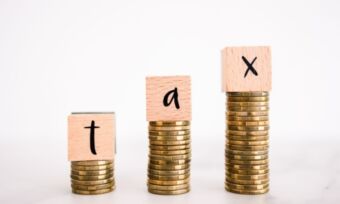The retirement sweet spot: When less in super can be more

The question of how much super you need in retirement is surrounded by uncertainty. Having too much super can work against you. But there is a sweet spot that allows you to use both money from your super and claim the Age Pension.
Australians are regularly reminded of the need to grow retirement savings. Yet it can be hard to know exactly how much we need in super to enjoy a quality retirement – more so, because there seems to be no single figure for a retirement ‘sweet spot’.
On one hand, industry body the Association of Superannuation Funds of Australia (ASFA) says that by the age of 67, a single person needs $545,000 in super for a ‘comfortable’ retirement, while couples need $640,000.
But Super Consumers Australia (SCA) says a single person could need as little as $88,000 in super or $111,000 for a couple combined. That’s a lot less than ASFA recommends, and that’s because SCA takes into account the availability of the Australian Government’s Age Pension, which can be an additional source of income in retirement.
What matters is that you consider what your ideal retirement looks like, and work out from there how much super you need to achieve that lifestyle. The catch is that tucking more into super during your working life can mean earning less – not more, in retirement income.
Key points:
- About 30% of Australian retirees say super is their main source of income but more than half rely on the Age Pension to some degree.
- Retirees can lose out on their pension due to the ‘taper’ rate working against people with large super balances.
- Analysis by BetaShares found retirees could be caught if they have savings between about $350,000 and $600,000.
- Due to the Age Pension assets test thresholds regularly being adjusted, the super sweet spot is a moving target.
Age pension asset limits
Close to four million Australians are retirees, according to figures from the Australian Bureau of Statistics (ABS). More than half (53%) rely on the Age Pension to some degree. While that figure is declining as our superannuation system matures, about 30% of retirees say super is their main source of income.
This highlights the important role the Age Pension continues to play. To qualify for the pension, retirees need to pass both an assets test and income test. Super is included in the assets test.
The full Age Pension may be available to single homeowners who have assessable assets below $280,000, from 20 September 2022 . A part-pension can be available if assets total less than $622,250. The range for a home owning couple is $419,000 for a full pension, or less than $935,000 for a part-pension. These limits will be in place until they are revised on 19 March 2023.
Asset test thresholds – Age Pension 20 September 2022
← Mobile/tablet users, scroll sideways to view full table →
| Home owners | Non-home owners (renters) | |||
|---|---|---|---|---|
| Lower threshold | Upper threshold | Lower threshold | Upper threshold | |
| Singles | $280,000 | $622,250 | $504,500 | $846,750 |
| Couples (combined) | $419,000 | $935,000 | $643,500 | $1,159,500 |
Source: Services Australia
The taper rate trap
The degree to which the fortnightly Age Pension payments reduce when assets sit between the lower and upper thresholds is determined by the ‘taper’ rate. It’s this rate that has the potential to work against people with large super balances, as for every $1,000 of assets above the lower threshold, retirees lose $3 from their fortnightly pension – or $78 a year.
The upshot is that retirees need to earn a return of 7.8% annually on those assets that exceed the minimum threshold in order to compensate for lost pension payments. That’s a big return, especially when it would need to be earned every year.
Not surprisingly, advocacy group National Seniors Australia (NSA) believes the current $3 taper rate is penalising some retirees for having more in savings. That’s because their assets are simply not able to earn as much as the retiree has lost in age pension payments.
“Someone who has saved twice as much as a retiree on a full pension, can be $1,000 a month worse off because of the taper rate,” said the National Seniors Chief Advocate, Ian Henschke. “How is that fair?”
The super sweet spot
The question is, what’s the super sweet spot that lets retirees maximise income from super while also maximising age pension payments? Views on this figure vary.
Analysis by BetaShares in 2020 found retirees could be caught in the taper rate trap if they have savings between about $350,000 and $600,000 depending on how their assets are invested.
Also in 2020, the Alliance for a Fairer Retirement System pointed to a super sweet spot of around $400,000, which can see a pensioner (home-owning) couple “earning $1,000 a month more than a couple with $800,000 in savings.”
Part of the challenge for retirees is that the upper and lower thresholds of the Age Pension assets test are normally adjusted upwards every six months. This means any so-called super sweet spot is likely to be a moving target rather than a set-in-stone figure that applies year after year.
Is it still worth growing super?
The taper trap is something to be aware of especially if your super savings are above the lower threshold of the assets test as you head towards retirement. But this shouldn’t deter you from growing your super. There may be solutions.
If you’re sailing close to losing the Age Pension entitlements, one option may be to spend part of your super upfront in order to lower the balance and boost pension eligibility.
We know from ABS data for instance, that two out of five 55-64 year-olds still have a mortgage, and using super to pay down a home loan has the potential to help homeowners live debt-free in retirement.
An alternative can be to use part of your super to invest in a lifetime annuity. Only 60% of the value of the annuity may be included in the assets test. But this is something to seek professional advice on as these annuities can come with restrictive conditions around accessing your money.
Know how your retirement income could shape up
It’s possible to get an advance idea of how your retirement income will shape up – and whether you’re in the super sweet spot or about to overshoot it.
The retirement income planner calculator on the Australian Government’s MoneySmart website shows your likely annual income in retirement including how much will come from super and how much the Age Pension contributes. It’s worth a look as you can play around with the figures to see how a change in super savings can impact retirement income.
Age pension eligibility may only get harder
The fine print to all this is that our ageing population may mean it’ll become harder to qualify for the Age Pension in the future.
The Federal Treasury’s 2020 Retirement Income Review shows that between 2002 and 2019, the number of people who reached pension eligibility age jumped by 46%, outstripping population growth over the same period of 32%.
We’ve already seen measures introduced to make it harder to access the Age Pension, including the increase in pension eligibility age from 65 in 2017 to age 67 by mid-2023.
The further you are from retirement age, the greater the likelihood that the rules around accessing the pension will change further. This highlights the need to embrace your super – and any opportunities to add to it during your working life.
Remember, no matter what your age, your super fund can be a source of low cost financial advice to help you find the super sweet spot that’s right for you.
If you’re unsure how the taper rate could impact your pension entitlements, a free financial information service is available through Services Australia – call 132 300 for details.
 Online rollover
Online rollover
 Online application
Online application
 Online rollover
Online rollover
 Online application
Online application
 Online rollover
Online rollover
 Online application
Online application
 Online rollover
Online rollover
 Online application
Online application
 Online rollover
Online rollover
 Online application
Online application
Canstar may earn a fee for referrals from its website tables and from Promotion or Sponsorship of certain products. Fees payable by product providers for referrals and Sponsorship or Promotion may vary between providers, website position, and revenue model. Sponsorship or Promotion fees may be higher than referral fees.
On our ratings results, comparison tables and some other advertising, we may provide links to third party websites. The primary purpose of these links is to help consumers continue their journey from the ‘research phase’ to the ‘purchasing’ phase. If customers purchase a product after clicking a certain link, Canstar may be paid a commission or fee by the referral partner. Where products are displayed in a comparison table, the display order is not influenced by commercial arrangements and the display sort order is disclosed at the top of the table.
Sponsored or Promoted products are clearly disclosed as such on the website page. They may appear in a number of areas of the website, such as in comparison tables, on hub pages, and in articles. The table position of the Sponsored or Promoted product does not indicate any ranking or rating by Canstar.
Sponsored or Promoted products table
- Sponsored or promoted products that are in a table separate to the comparison tables in this article are displayed from lowest to highest annual cost.
- Performance figures shown for Sponsored or Promoted products reflect net investment performance, i.e. net of investment tax, investment management fees and the applicable administration fees based on an account balance of $50,000. To learn more about performance information, click here.
- Please note that all information about performance returns is historical. Past performance should not be relied upon as an indicator of future performance; unit prices and the value of your investment may fall as well as rise.
Cover image source: Lucigerma/Shutterstock.com
This article was reviewed by our Senior Finance Journalist Michael Lund and Digital Editor, Canstar Amanda Horswill before it was updated, as part of our fact-checking process.

Try our Superannuation comparison tool to instantly compare Canstar expert rated options.






